Potřebujeme váš souhlas k využití jednotlivých dat, aby se vám mimo jiné mohly ukazovat informace týkající se vašich zájmů. Souhlas udělíte kliknutím na tlačítko „OK“.
ASTM E1368-14
Standard Practice for Visual Inspection of Asbestos Abatement Projects
Automaticky přeložený název:
Standardní praktiky pro vizuální kontrolu azbestu na snížení emisí projektů
NORMA vydána dne 15.1.2014
Informace o normě:
Označení normy: ASTM E1368-14
Poznámka: NEPLATNÁ
Datum vydání normy: 15.1.2014
Kód zboží: NS-41524
Počet stran: 15
Přibližná hmotnost: 45 g (0.10 liber)
Země: Americká technická norma
Kategorie: Technické normy ASTM
Kategorie - podobné normy:
Anotace textu normy ASTM E1368-14 :
Keywords:
abatement, asbestos, cleanup, operations and maintenance, procedures, removal, responsibilities, visual inspection, ICS Number Code 13.030.30 (Special wastes)
Doplňující informace
| Significance and Use | ||||||||||||||
|
5.1 This practice applies to response actions for all types of asbestos-containing materials, including surfacing materials, thermal systems insulation, and miscellaneous materials, whether friable or not, regardless of the quantities involved and the reason for conducting the response action. 5.1.1 Abatement for the purpose of removing asbestos-containing materials or encapsulating or enclosing them, regardless of the engineering controls and work practices used, requires performance of visual inspections as described in this practice. 5.1.2 Operations and maintenance (O&M) activities, such as removal, encapsulation, or enclosure of asbestos-containing materials incidental to repair or replacement of a component, clean-up of debris from a fiber release episode, or other preventive measures, require the performance of visual inspections as described in this practice. See Managing Asbestos in Place and Guidance Manual. 5.1.3 This practice applies to response actions performed under a contract from the building owner, as well as to work performed by the building owner's staff. 5.2 The specific objectives of the visual inspection process before, during, and at the conclusion of an asbestos abatement project are: to review the extent of asbestos-containing material (ACM) within the scope of work, to monitor performance of the work, and to verify if visible residue, dust or debris, or unremoved material are absent at the completion of removal and clean-up activities. 5.2.1 The visual inspection process is used to evaluate all four aspects of an asbestos abatement project as follows: 5.2.1.1 Extent of ACM within Scope of Work—The building survey which is intended to locate and quantify asbestos-containing materials is not properly called a “visual inspection” within the context of this practice. To define the extent of ACM involved, a building survey is a necessary prelude to the first step of the visual inspection process. The building survey, which may use other building records, is intended to locate and assess the condition of ACM with confirmation by laboratory analysis of bulk samples. Additional surveys may be required during project design to find ACM in locations not entered or accessible during the initial building survey. The extent of the ACM to be abated must be known in order to properly design the abatement project. See 40 CFR Part 61. 5.2.1.2 Project Work Performance—Observation of work activities throughout the abatement project confirms acceptable work performance and aids the visual inspection for completeness of removal of ACM from the surfaces and components and for completeness of cleanup of the work area. Careful examination of the work area may be required at the start of the project for debris that may have been generated after the building surveys and project design. 5.2.1.3 Completeness of Abatement—The presence of residue, visible without the use of magnifying devices, on surfaces and components from which asbestos has been removed indicates that additional cleaning of these surfaces is required. All ACM required to be removed by the contract documents must be gone in order to pass the inspection for completeness of removal. Similarly, the presence of improperly encapsulated or insufficiently enclosed material indicates that these measures, if used for abatement or as an adjunct thereto, were inadequately performed and corrective action shall be taken. 5.2.1.4 Completeness of Clean-up—The presence of dust or debris on surfaces in areas where abatement has taken place indicates that these areas were not properly cleaned following the abatement. Final air samples for clearance and re-occupancy shall not be taken until the visual inspection for completeness of clean-up is passed. 5.2.2 Visual inspection is not a substitute for air monitoring at any stage of the work and is particularly not a substitute for final air testing for building re-occupancy following an asbestos abatement project. The basic premise of this practice is that a surface, component, or work area where residue, dust or debris, or unremoved material, visible without the use of magnifying devices, is still present is not sufficiently clean for subsequent stages of work. Any residue, dust, or debris found during the inspections is assumed to contain asbestos, and the surfaces, components, and area must be re-cleaned before proceeding further. 5.2.3 Passing the visual inspections for completeness of abatement and clean-up improves the chances, but does not guarantee, that the area will pass final air testing for clearance. 5.3 Visual inspection is an important means of determining acceptable completion of O&M work. The objectives of the visual inspection process as it applies to O&M work are similar to those for abatement projects with specific procedures and acceptance criteria that recognize the following aspects of O&M activities: 5.3.1 O&M work is generally more brief than abatement projects, involves less ACM, and is consequently referred to as “small-scale, short-duration” in Appendix B to 40 CFR Part 763 (EPA AHERA regulations). Permissible quantities and operations may vary according to applicable regulations and are not specified in this practice. 5.3.2 O&M work often lacks such protective measures as negative pressure and decontamination facilities that provide protection to workers and building occupants during abatement projects. |
||||||||||||||
| 1. Scope | ||||||||||||||
|
1.1 This practice covers procedures for performing visual inspections of asbestos response actions to: 1.1.1 Establish the extent of the required work before it begins; 1.1.2 Determine the progress and quality of the work and evaluate the completeness of the response action; and 1.1.3 Evaluate the cleanliness of the work area prior to final air testing for clearance (if performed), and subsequent to dismantling of critical barriers. 1.2 This practice can be used on an abatement project, or for operations and maintenance (O&M) work, performed by the building owner's staff. It can also be used in conjunction with contract documents between the building owner and other parties involved in an abatement project. 1.3 This practice provides the
following information:
1.3.1 The objectives of the visual inspection process; 1.3.2 The responsibilities and qualifications of the individuals involved in the visual inspections; 1.3.3 The schedule of visual inspection activities during an abatement project and O&M work; 1.3.4 The inspection procedures for the various types of abatement work and O&M tasks; and 1.3.5 The criteria for certifying work as complete on the basis of the visual inspections. 1.4 The values stated in inch-pound units are to be regarded as standard. The values given in parentheses are mathematical conversions to SI units that are provided for information only and are not considered standard. 1.5 Warning—Asbestos fibers are acknowledged carcinogens. Breathing asbestos fibers can result in disease of the lungs including asbestosis, lung cancer, and mesothelioma. Precautions in this standard practice should be taken to avoid creating and breathing airborne asbestos particles from materials known or suspected to contain asbestos. See 2.2 for regulatory requirements addressing asbestos. 1.6 This standard does not
purport to address all of the safety concerns, if any, associated
with its use. It is the responsibility of the user of this standard
to establish appropriate safety and health practices and determine
the applicability of regulatory limitations prior to use.
Standard Test Method for Determination of
Asbestos in Soil Standard Practice for Maintenance,
Renovation, and Repair of Installed Asbestos Cement Products
(Includes all amendments and changes 2/7/2020). Standard Practice for Comprehensive
Building Asbestos Surveys Standard Practice for Testing Physical
Properties of Friable Surfacing Materials Standard Terminology Relating to
Resilient Floor Coverings Standard Terminology of Building
Constructions Standard Terminology for Sampling and
Analysis of Asbestos |
Podobné normy:
Historická
1.1.2012
Historická
1.6.2009
Historická
1.1.2010
Historická
1.6.2011
Historická
1.6.2011
Historická
15.11.2006


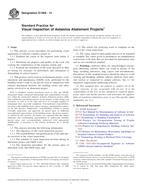
 ASTM C1571-03(2012)..
ASTM C1571-03(2012)..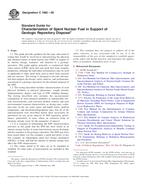 ASTM C1682-09
ASTM C1682-09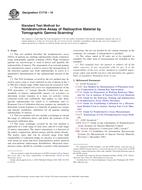 ASTM C1718-10
ASTM C1718-10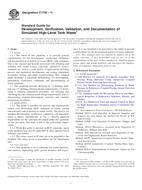 ASTM C1750-11
ASTM C1750-11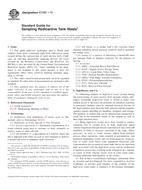 ASTM C1751-11
ASTM C1751-11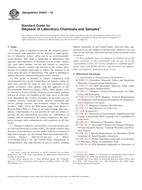 ASTM D4447-10
ASTM D4447-10
 Cookies
Cookies
